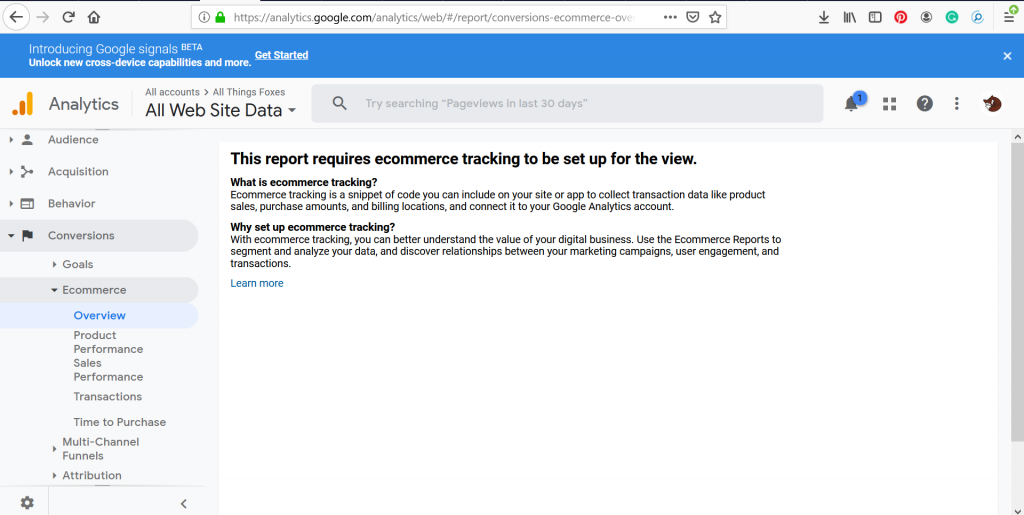
With T-shirt sales at US $154M in 2019 and with an estimated market growth of 5.4% you want to have a slice of the T-shirt pie. Your passion for these garments has stirred within you a desire to start your own online store with Shopify.
Yet, you realize that you don’t know how or where to start, but that yearning in your heart won’t go away. Never fear, keep reading and by the time you have finished, you’ll be all set to start your own profitable T-shirt business through Shopify.
Your customers are who?

Before anyone ventures into the world of business, they need to find out what their target market is. That is, what is your niche? If you don’t know who your market is, then you are going to take a very expensive shot in the dark.
Yet, how do you go about identifying your niche? Here are some tips to help you identify your potential audience that will be willing to fork over their cash to buy your T-shirts.
Check out your competition
What is it that they aren’t doing? What is the gap in the market that you can identify? Spot the gap and you have a segment of the market you can reach out to. Read the lower rated reviews (those with 1-3 stars) on online shopping sites such as Shopify and see what customers may be dissatisfied with.
Become “one” with your market
To really get a feel for your target market, you need to think, breathe and eat as they do! That is, you need to get an intimate understanding of your ideal customer.
- Where do they hang on online? What Social Media do they use and which groups, forums, etc. do they subscribe to?
- Are they male, female or are you targeting a mix?
- Which age range are you aiming to reach?
- What do they love and hate?
- How about their culture? American tastes may differ from those in Ireland.
Do your own market research
Do you have a Social Media account? Then use that to do a marketing survey. Facebook and Twitter allow you to create surveys and polls so you can test the waters. Place some t-shirt mockups on Instagram or Pinterest to gauge reaction from your prospective customers. Another option is to use a site like SurveyMonkey.
As you identify your niche and target market, then you can get a feel for the style of the T-shirts that you want to sell.
Love the design!

Your designs are what is going to set you apart from the competition but how are you going to create the design? Will you do it yourself or hire a graphic designer?
If you are adept at using Photoshop you can make your own designs. When setting up your initial design ensure that you choose 300 dpi. Also, you want to have your background set as “Transparent” and the color mode should be RGB 8bit.
Now you have set up Photoshop and made your first design, you can’t wait to see what it looks like on a T-shirt. It’s time to see what your potential creation looks like by using a T-shirt mockup.
There are plenty of T-shirt mock-up Photoshop templates that you can download. You can check out Creative Market which offers a decent range of templates. Or just do a Google search. A mockup template takes your design and puts it on a T-shirt so that you can get a visual of how your end product is going to look.
If you don’t have Photoshop or you aren’t good at graphic design, you can always hire a designer. There are plenty of freelancers that can be found through sites like Fiverr or Upwork.
What printing technique to use?

You have your design ready and now it’s time to put it onto your shirt. There are several printing techniques you can choose from:
Screen Printing
This is a great option if you are looking at producing a large number of shirts. Also, it allows you to print in a variety of colors (just remember each color needs a new screen, so it can become pretty pricey). Another plus with screen printing is that your design will be durable and not fade.
The disadvantage is that it is uneconomical if you are producing a small number of T-shirts (25 or less) as the set up cost is somewhat fixed.
Direct to Garment
With Direct to Garment you are printing your design straight onto your shirt (just like printing onto paper!). There is little set-up involved and you can print a small batch of shirts or even one-offs. The end result feels soft as the ink thin (which also means it’s best suited for lighter colored fabrics, otherwise the design won’t look that great).
Make sure that you use a high-quality printer otherwise your design is going to look low resolution (which will definitely turn your potential customers off!).
Heat Transfer
Heat Transfer is a good option if you are only doing a small number of shirts. Put your design onto some transfer paper, apply heat pressure onto the transfer and then peel it off. It’s a great option if you want to print colour images or photos onto your shirt. Plus it’s quick, taking only 3-5 minutes.
Just be aware that with this technique the print can fade after a while. Another point to be wary of is that the transfer will make the fabric of the T-shirt firm.
Dye Sublimation
Dye Sublimation is ideal for polyester or any other man-made fabric. It is a similar process to Heat Transfer where the design is printed onto paper and then applied to the garment. You can’t feel the transfer on the shirt, so that means a soft touch to your T-shirt.
However, this process is only ideal for light colored or white T-shirts. Another downside is that you can’t print onto 100% cotton.
Embroidered printing
If you want to give your T-shirts a formal look, then this is the technique for you. Instead of printing, the design is sewn onto the garment which means that it is going to last a long time.
It’s not an ideal option for full graphics as it can be costly when one considers the amount of different colored threads needed. When it comes to small text, the result can become unreadable.
With a range of printing options available, it’s simply a matter of you deciding what you want your end product to look and feel like. Also, how many print runs you are going to do. If you don’t want to do the printing yourself, you can use an online T-shirt printing service.
Quality means happy customers

Can you think of the time you bought a T-shirt that was well…falling apart after you wore it a couple of times? Simple business advice: Don’t sell those to your customers!
How can you tell a quality T-shirt from one of its cheaper counterparts? First, go to your closet and pull out one of your favourite T-shirts and study it. How does it feel? What is it made of? When you put it on, is it too tight or too loose? These are all indications of an amazing shirt.
Chances are that your best-loved T-shirt is made of cotton. That’s because it’s a breathable fabric and the print on it looks amazing. Look for a tighter weave and longer threads, as these mean that the material is going to last longer and have a softer feel about them.
Another indicator of a good quality shirt is one that won’t wrinkle much when you squish the material in your hand.
Sure, quality costs more, but you can also ask for a higher price for your product as people know that they are going to be getting a great T-shirt.
Brand time

Think of your favourite brand. What makes them stand out? Why do you like that particular brand? What is it they do differently?
When it comes to making a dent in the competitive world of T-shirt retailing you need to think long and hard about your brand. What is your mission statement? What is your unique point of difference? How are you going to promote your brand? What are your values? What image do you want to portray?
It takes a while to build up a brand, but when you do you can become an icon in your field.
Taking stock of your stock

When it comes to thinking about inventory, you can either have the stock on hand or you can utilize print-on-demand services such as Printful or Zazzle, or even go with dropshipping.
Your own Inventory
The benefits of having your own inventory is that it is quicker to dispatch the order to your customer and also you can provide better customer service because the consumer is buying directly from you rather than going through a middle-man.
The downside to having your own inventory is that you can have stock sitting around that you can’t sell, therefore tying up your cash. Also, you have to consider the possibility of incurring storage fees if you plan on storing your stock in a warehouse or storage facility.
Print-on-Demand
With print-on-demand services, you don’t have to concern yourself with tying up money in stock as these services will fulfil the order once it is placed. Also, there is no need to invest in any printing equipment.
The disadvantages with using these services are that you lose control of your customer order systems and it takes longer to ship the product to the customer (due to the amount of time it takes to create the T-shirt and then shipping it out). Another negative with these services is that you are relying on the company to be able to provide the product (out of stock items or discontinues lines means trouble for you).
Dropshipping
Dropshipping is a popular way to start a store as there are very little start-up costs and you don’t have to store inventory. The dropshipping company handles everything as soon as they receive an order for your product. That’s a plus for anyone who is just starting out with a brand new online store.
The things you need to be wary of with drop shipping is that, similar to print-on-demand services, you lose control over your customer fulfilment process. Also, dropshipping companies take a cut of the sales which means less profit for you. Something else to keep in mind is that due to the popularity of drop shipping, there is a lot of competition so you definitely need to have something unique in order to stand out from the crowd.
Shopify, here we come!

Now you have done your research, figured out your brand and customers as well as your printing technique and inventory handling option, it’s time to get your shop open. Exciting! Here’s how to get your store up and running.
1. Sign up to Shopify
It doesn’t take long to set up your shop with Shopify and you can even take advantage of Shopify’s 14-day free trial. So, obviously, the first step is to head over to Shopify and sign up.
2. Choose a theme:
When it comes to the look shop, you can use one of the themes provided by Shopify (you have the option of free themes or you can buy a Premium one). One thing to keep in mind when choosing a theme is the style and feel you want to have for your store. Do you want something conservative or a theme that is more cheeky?
If you aren’t a fan of any of the themes you find on Shopify, you can always head over to sites such as Themeforest or TemplateMonster and see what they have to offer.
Make sure you test the theme for functionality before settling on it. The last thing you and your customers want is a theme that isn’t user-friendly.
3. Payment:
You want money from your customers, right? When it comes to receiving payment you want to minimise any costs of processing the payment. Look at the fees that the different payment gateways charge.
Cheap doesn’t always mean the best service either. Look for a balance between a reliable payment system and the costs charged to process the transaction from your customer.
4. Business Information and Tax:
Before making your new Shopify store live, you need to provide company and business information to Shopify as part of the setup process. What is the name of your store? Where is it located?
You do have to pay tax (it’s one of those givens in life). If you aren’t familiar with setting up for tax, then seek the advice of a financial adviser or accountant.
5. Do a “test” order:
A final step in the creation of your store is to place a mock order to see if everything is running smoothly. You don’t want any headaches or grumpy customers on your opening day!
Head over to the very useful Shopify Bogus Gateway and from here you can do a test run of your store. When you are happy that everything is working the way it should, then you’re good to go.
All the best for your Opening Day

Now you are all set and ready to build your own T-shirt business. You have your unique brand. You know who your customers are and the printer is ready to pump out your first batch of t-shirts. Good on you!
But, it takes time and effort to build any successful business, so stay focused and committed. Keep an eye on the competition. Listen to what your customers are saying or wanting and keep your creative design juices flowing.
Good luck with your Opening Day! Go and smash your goals!














